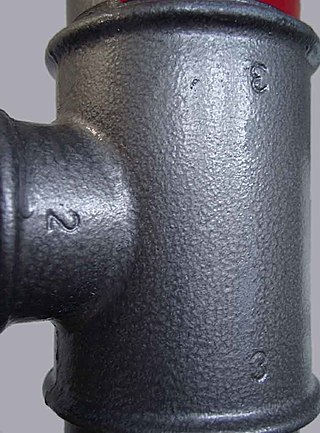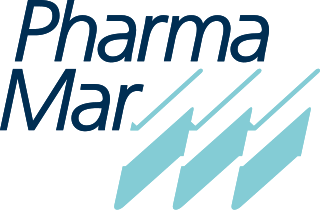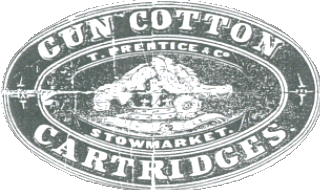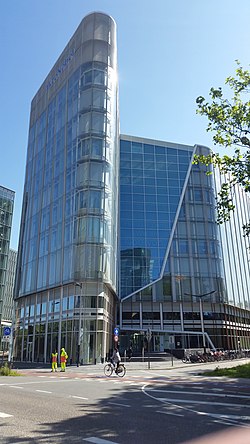
Imperial Chemical Industries (ICI) was a British chemical company. It was, for much of its history, the largest manufacturer in Britain. It was formed by the merger of four leading British chemical companies in 1926. Its headquarters were at Millbank in London. ICI was a constituent of the FT 30 and later the FTSE 100 indices.
Schering-Plough Corporation was an American pharmaceutical company. It was originally the U.S. subsidiary of the German company Schering AG, which was founded in 1851 by Ernst Christian Friedrich Schering. As a result of nationalization, it became an independent company. In 1971, the Schering Corporation merged with Plough, Inc. to form Schering-Plough. On November 4, 2009 Merck & Co. merged with Schering-Plough with the new company taking the name of Merck & Co.

Ciba was a chemical company based in and near Basel, Switzerland. "Ciba" stood for "Chemische Industrie Basel" and was formed when the non-pharmaceuticals elements of Novartis were spun out in 1997, following the merger in the previous year of Ciba-Geigy and Sandoz that created Novartis.

PPG Industries, Inc. is an American Fortune 500 company and global supplier of paints, coatings, and specialty materials. With headquarters in Pittsburgh, Pennsylvania, PPG operates in more than 70 countries around the globe. By revenue it is the largest coatings company in the world followed by Sherwin-Williams. It is headquartered in PPG Place, an office and retail complex in downtown Pittsburgh, and is known for its glass facade designed by Postmodern architect Philip Johnson.
Canadian Industries Limited, also known as C-I-L, is a Canadian chemicals manufacturer. Products include paints, fertilizers and pesticides, and explosives. It was formed in 1910 by the merger of five Canadian explosives companies. It was until recently a subsidiary of Imperial Chemical Industries until ICI was purchased by AkzoNobel.

Hammerite is a brand of hammer paint made by Hammerite Products, a subsidiary of AkzoNobel.

Clariant AG is a Swiss multinational speciality chemical company, formed in 1995 as a spin-off from Sandoz. Headquartered in Muttenz, Switzerland, the public company encompasses 74 subsidiaries in 36 countries (2022). Major manufacturing sites are located in Europe, North America, South America, China, and India. In 2022, sales from continuing operations were 5.198 billion CHF.

Dulux is an internationally-available brand of architectural paint that originated from the United Kingdom. The brand name Dulux has been used by both Imperial Chemical Industries (ICI) and DuPont since 1931 and was one of the first alkyd-based paints. It is produced by AkzoNobel although the North American market is now served by PPG Industries.
Courtaulds was a United Kingdom-based manufacturer of fabric, clothing, artificial fibres, and chemicals. It was established in 1794 and became the world's leading man-made fibre production company before being broken up in 1990 into Courtaulds plc and Courtaulds Textiles Ltd.
Lucky Core Industries Limited, previously known as ICI Pakistan Limited, is a Pakistani conglomerate company headquarted in Karachi, Pakistan. It manufactures polyester, pharmaceutical, agrochemical, soda ash, and veterinary medicine.
Organon & Co. is an American pharmaceutical company headquartered in Jersey City, New Jersey. Organon specializes in the following core therapeutic fields: reproductive medicine, contraception, psychiatry, hormone replacement therapy (HRT), and anesthesia. Organon produces all its products outside of the United States but gets a third of its revenue from the United States. Organon & Co. is an example of increasing women's representation on Wall Street with over 50% of its board of directors and executive leadership being female.
Tata Chemicals Europe is a UK-based chemicals company that is a subsidiary of Tata Chemicals Limited, itself a part of the India-based Tata Group. Its principal products are soda ash, sodium bicarbonate, calcium chloride and associated alkaline chemicals.

Crown Paints is a major paint manufacturer based in Darwen, Lancashire. It is owned by Hempel Group.

International Paint, abbreviated as International, is a brand of the Marine & Protective Coatings business unit of AkzoNobel.

Glidden is an American paint brand, manufactured by PPG Industries.

Axalta Coating Systems Ltd., also known as simply Axalta, is an American company specializing in coatings in a wide variety of industrial applications, materials and sectors, including automotive paints. The company is based in Philadelphia, Pennsylvania, and incorporated in Bermuda. Axalta develops and manufactures coatings for light and commercial vehicles, industrial, and refinish applications. The firm does business in 130 countries, has nearly 13,000 employees, and has more than 100,000 customers.
DuPont de Nemours, Inc., commonly shortened to DuPont, is an American multinational chemical company first formed in 1802 by French-American chemist and industrialist Éleuthère Irénée du Pont de Nemours. The company played a major role in the development of Delaware and first arose as a major supplier of gunpowder. DuPont developed many polymers such as Vespel, neoprene, nylon, Corian, Teflon, Mylar, Kapton, Kevlar, Zemdrain, M5 fiber, Nomex, Tyvek, Sorona, Corfam and Lycra in the 20th century, and its scientists developed many chemicals, most notably Freon (chlorofluorocarbons), for the refrigerant industry. It also developed synthetic pigments and paints including ChromaFlair.

PharmaMar is a Spanish pharmaceutical company headquartered in Colmenar Viejo, Madrid, Spain. Founded in 1986 as a subsidiary of Zeltia, it absorbed its parent company and all its subsidiaries in a reverse merger takeover in 2015. The company is a component of the Madrid Stock Exchange General Index (IGBM) and the IBEX 35 since 2020, after being part of the Ibex Small Cap stock market index.

The Stowmarket Guncotton Company was an explosives company established in the 19th century by Messrs Prentice that operated a gun-cotton factory in Stowmarket, Suffolk, England. The factory was the scene of an explosion in 1871 that claimed the lives of 28 people.



















